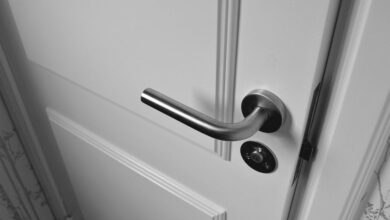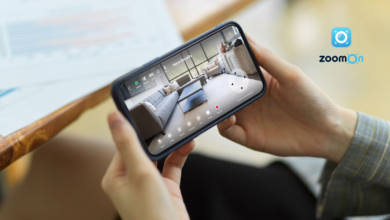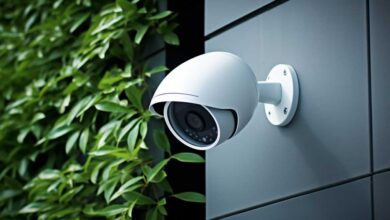What Are Standalone Home Security Systems?
KEY TAKEAWAYS
Standalone home security systems have become a preferred choice for homeowners and businesses alike. These state-of-the-art systems offer immense flexibility, high security, and considerable cost savings.
This blog explores standalone home security systems, their key features, their advantages, and how to choose the right system.
Understanding Standalone Home Security Systems
A standalone home security system is a self-contained unit that does not require any external network connections. It’s designed to function independently, providing security through various embedded sensors and alarm systems. This self-sufficiency makes them ideal for safeguarding both residential and commercial properties.
Key Features Of Standalone Home Security Systems
Some key features of standalone home security systems include:
-
Ease Of Installation: Standalone systems often come pre-assembled, allowing for quick, hassle-free installation. This ease of setup often translates into significant cost savings.
-
Portability: These systems are not hardwired into a property, making them ideal for renters or those who frequently move.
-
Self-Monitoring: Standalone systems typically offer self-monitoring capabilities. This means homeowners can monitor their property themselves without needing a professional monitoring service.
-
Integrated Alarm Systems: Standalone systems often come equipped with an alarm system to notify homeowners of potential threats.
Advantages Of Using Standalone Home Security Systems
With a standalone home security system, you’re in complete control. You can choose when to arm or disarm the system, monitor the feeds, and react accordingly. You aren’t reliant on a third-party service, so there’s no need to worry about service interruptions.
Privacy
Privacy is one of the top benefits of a standalone system. As they are self-monitored, there is no risk of any third-party having access to your security feed.
Cost-Effectiveness
Without the need for a monthly subscription to a monitoring service, standalone systems can save a significant amount of money in the long run.
Flexibility
Standalone home security systems can be customized to fit any home or business’s specific needs. Add or remove components as necessary, ensuring your property is adequately protected.
Choosing The Right Standalone Home Security System
Choosing the right standalone home security system depends on several factors, including your property size, your budget, and your specific security needs. It is essential to do your research and compare different systems before making a decision.
System Components
Common components of standalone home security systems include control panels, sensors (door/window, motion, glass break), security cameras, sirens, and key fobs. Ensure the system you choose includes the components necessary for your property’s security.
Backup Power
Ensure the system has a reliable backup power source. This will ensure that your system remains operational during power outages.
Quality And Reputation
Lastly, consider the manufacturer’s reputation and the system’s quality. Customer reviews and ratings can provide valuable insights into the system’s performance and reliability.
Smart Features In Standalone Home Security Systems
In this era of smart technology, standalone home security systems are not left behind. They are designed with features that allow integration with other smart devices in your home. These include smart locks, lights, and thermostats, creating a comprehensive smart home ecosystem. For instance, you can set your system to turn on your lights when motion is detected or lock your doors when the system is armed. It’s all about enhancing convenience, comfort, and security.
Remote Monitoring Capabilities
Most standalone home security systems provide remote monitoring capabilities. They come with a dedicated mobile application that homeowners can use to monitor and control their system from anywhere in the world. This app allows you to arm or disarm your system, view live video feeds, receive alerts, and even communicate with anyone at your property in real-time. It ensures that you stay connected with your home, even when you’re miles away.
Maintenance And Upgrades
Standalone systems offer the benefit of easy maintenance and upgrades. Since they’re not hardwired into your property, it’s easier to perform regular maintenance checks or replace individual components if necessary. This ability to upgrade also means that your system can evolve with technology. As new features and devices become available, you can easily incorporate them into your system to enhance its functionality.
Frequently Asked Questions
To help you understand more about standalone home security systems, we have answered some of the more commonly asked questions.
Can I install a standalone home security system myself?
Yes, most standalone home security systems are designed for easy, DIY installation. They come with clear instructions and often require no specialized tools.
What happens to my standalone system if there’s a power outage?
Most standalone systems come with a backup power source, often a battery, to ensure your system stays operational during power outages. However, it’s essential to regularly check and replace these batteries as necessary.
Can standalone home security systems be integrated with smart home devices?
Absolutely. Many standalone systems are designed to work seamlessly with other smart devices in your home. This allows for a more comprehensive home security and automation setup.
Securing Your Home With Standalone Home Security Systems
Standalone home security systems offer a flexible, cost-effective solution for safeguarding your property. With their easy installation, user-friendly design, and high security, they can provide peace of mind, knowing that your property is protected.
Ready to upgrade your home security? Check out Security Forward’s guide on ways to secure your home with smart technology today!





